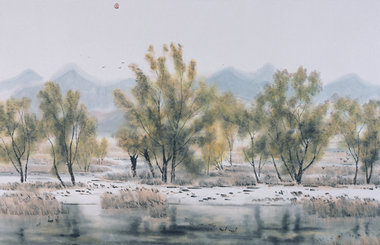 |
|
A painting done by Qianlong in 1763 features auspicious Chinese motifs and was meant to usher in the new year. The last one of its kind was painted by the emperor on first day of China's lunar new year in 1799, two days before his death on Feb 7.[Photo provided to China Daily]
|
However, behind everything that happened to the future emperor there lay a single purpose, the necessity to rule, says Wang Yimin, Yang's colleague at the Palace Museum, a specialist in ancient Chinese calligraphy.
"Hongli, the sixth emperor of the Qing Dynasty (1636-1912), descended from a lineage of Manchu rulers who had come from the north to conquer the whole of China, the majority of whose population was Han Chinese.
"Successive Manchu emperors, stigmatized by what they felt was their lack of cultural sophistication, went to great lengths to ensure their offspring would be raised in the most classic of the Han literary tradition.
"To submerge themselves in this tradition was to be able to communicate with society's elite and thus to gain legitimacy to rule. A vital part of that tradition is visual."
So it was with gusto that the emperor, better known by his regnal title Qianlong, meaning enduring eminence, took up painting. Some of his works were given to his favorites at court, as a token of benevolence, and no doubt as a subtle hint of his artistic prowess.
Yet Tian Yimin, another expert on ancient Chinese painting and calligraphy at the Palace Museum, believes that the emperor, despite his immense hubris, was well aware of his limitations, or, put more bluntly, he knew he was no genius.


























 Raymond Zhou:
Raymond Zhou: Pauline D Loh:
Pauline D Loh: Hot Pot
Hot Pot Eco China
Eco China China Dream
China Dream China Face
China Face






